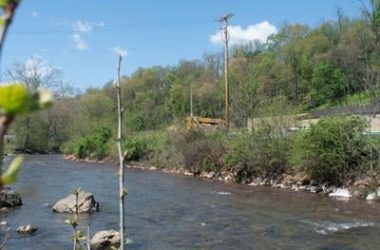By KEN WARD JR.
Charleston Gazette-Mail
CHARLESTON, W.Va. — A federal judge in West Virginia was correct in ruling that coal operators in the state must comply with water quality standards that limit the legal pollution allowed in streams, an appeals court ruled Wednesday.
A three-judge panel of the 4th U.S. Circuit Court of Appeals concluded that a state-issued water pollution permit did not shield Fola Coal Co. from the water quality standards because West Virginia rules incorporated the standards into that Department of Environmental Protection permit.
The 4th Circuit’s 33-page decision affirmed a January 2015 decision by U.S. District Judge Robert C. Chambers concerning mining conductivity pollution that scientists, environmental groups and the U.S. Environmental Protection Agency have found to have seriously harmed streams across the Appalachian coalfields.
The appeals court credited Chambers with writing a “long, remarkably thorough opinion.” It said the district judge’s decision “reflects its careful fact-based findings, not unprincipled rulemaking,” and that Fola’s arguments to the contrary “uniformly fail.”
Judge Diana Gribbons Motz, a Clinton appointee, wrote the 4th Circuit opinion. She was joined by Judge Albert Diaz, an Obama appointee, and Judge Gerald Bruce Lee, a Clinton appointee to the federal district court in Eastern Virginia, who was designated to serve on the panel for the case.
“It’s very important and it sets a precedent for restoration of the state’s waters and hopefully prevents future approval of discharges of conductivity in violation of the water quality standards,” said Joe Lovett, an Appalachian Mountain Advocates attorney who represented citizen groups in the case.
Fola Coal offered no comment on the 4th Circuit ruling.
The case focused on water quality problems downstream from Fola’s former mountaintop removal operation in the Stillhouse Branch watershed, near the border of Nicholas and Clay counties. Chambers had ruled that Fola violated its water pollution discharge permit by allowing runoff of high amounts of ionic pollution —salts and dissolved solids — into Stillhouse Branch.
Scientists use electrical conductivity as a key indicator of stream health and the presence of other important pollutants, such as chlorides, sulfides and dissolved solids. Research has linked these pollutants increasingly to coal-mining activities and found that high levels of conductivity are associated with damage to aquatic life.
The case is one of several that the Ohio Valley Environmental Coalition, the West Virginia Highlands Conservancy and the Sierra Club have brought in response to increased concern about conductivity pollution, an issue that the Obama administration’s EPA raised in its effort to more strictly regulate mountaintop removal mining.
It is believed to be the first federal court ruling in which West Virginia’s “narrative” water quality standard was being enforced on the coal industry. The narrative standard does not impose numeric pollution limits, but instead forbids pollution that is harmful or has significant adverse impact on aquatic ecosystems.
“The court heard extensive expert testimony on the causal relationship between increased conductivity in Appalachian streams and impairment,” the appeals court ruling said. “The court credited the testimony of accepted experts and an authoritative EPA publication. All concluded that mining activities cause increases in conductivity, which in turn cause impairment.”
See more from the Charleston Gazette-Mail





